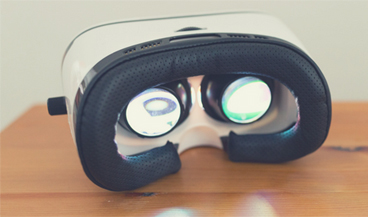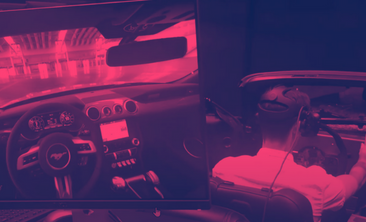
The Last Screen
The Last Screen https://www.visualstorytell.com/wp-content/uploads/2017/09/augmented.jpg 368 217 Cathy Hackl Cathy Hackl https://secure.gravatar.com/avatar/f40edde5b3c24d62a7c759bc1e78521bfce0eb5806e95c9b629b2830462ba30b?s=96&d=mm&r=g- Cathy Hackl
- no comments
Watch my video recording on the
Visual Storytelling Today show:
On the road?
You can also listen to my audio podcast of this episode.
Subscribe to the Visual Storytelling Today podcast on iTunes or Google Play
Storytelling is going through a transformation. We’re moving away from content that is 2D to content that is 3D, 360 and sometimes holographic. This is all happening because of the immersive technologies that are shifting our focus from storytelling, as we know it, to storyliving.
We will move away from being passive recipients of a story to becoming active members in them. Stories in the future will give us agency to “chose our own story” and personalize our entertainment even further.
Two technologies are leading the path in this transformation from telling to living. They are virtual reality (VR) and augmented reality (AR). VR is a digital environment in which you are fully immersed in a digital world. It essentially cuts you off from the real world. Through the use of virtual reality headsets, you are no longer looking at the real world, but instead at a digital environment. It is sometimes a world that you can interact with, where you have agency.
AR is the overlay of virtual elements into the real world. Think Pokémon Go, which used augmented reality to place digital game elements into the real world through our mobile phones. In augmented reality, the digital world is added into the real world. Eventually this will turn into mixed reality – where digital elements are overlaid into the real world and are full interactive.
In other words AR changes the world around you, VR creates new worlds.
While AR and VR are currently viewed by many brands as a marketing tactic, these technologies have huge implications for the future of work and education. Credit Suisse estimates that the VR AR market might be worth close to $600 billion by 2025. To put this in perspective, that’s roughly approaching the size of the smartphone business. Every tech giant in Silicon Valley is working on developing these technologies.
This shift in content is, of course, being powered by artificial intelligence and is happening faster than consumers think. Educating marketers and communicators on these technologies is one of my missions. That’s why I’m currently working on the 1st book on VR/AR Marketing which will be published at the end of the month.
The way we tell stories visually is evolving. While we used to be told to sit as far away from our TVs as possible, we keep moving screens closer to our eyes from mobile phones to tablets to VR headsets. Some consider AR and VR to be last screens we will use as we move from mobile phones to smart glasses. To pretend that the way we tell stories won’t change is to be naive. Visual stories will become even more immersive and more engaging as we move forward with this augmentation of content.
Want to know more?
At the top of this page, you can watch or listen to my session on Visual Storytelling Today show, done on October 2nd, 2017. I chatted about the why marketers should start experimenting with AR and VR, key industry examples, how to get started, success metrics and actionable tips – and you’re going to want to watch or hear this.
See you in the augmented world!
***
Looking for a custom Visual Storytelling
workshop around your product/service?
Schedule a FREE conversation
Cathy Hackl
Cathy Hackl is a marketing futurist. She’s also the co-chair of The VR AR Association’s Marketing Committee and one of the women leading the virtual and augmented content revolution. She’s a VR/AR speaker, evangelist and consultant. You can find her at cathyhackl.com.
All stories by: Cathy HacklYou might also like
This site uses Akismet to reduce spam. Learn how your comment data is processed.





Leave a Reply